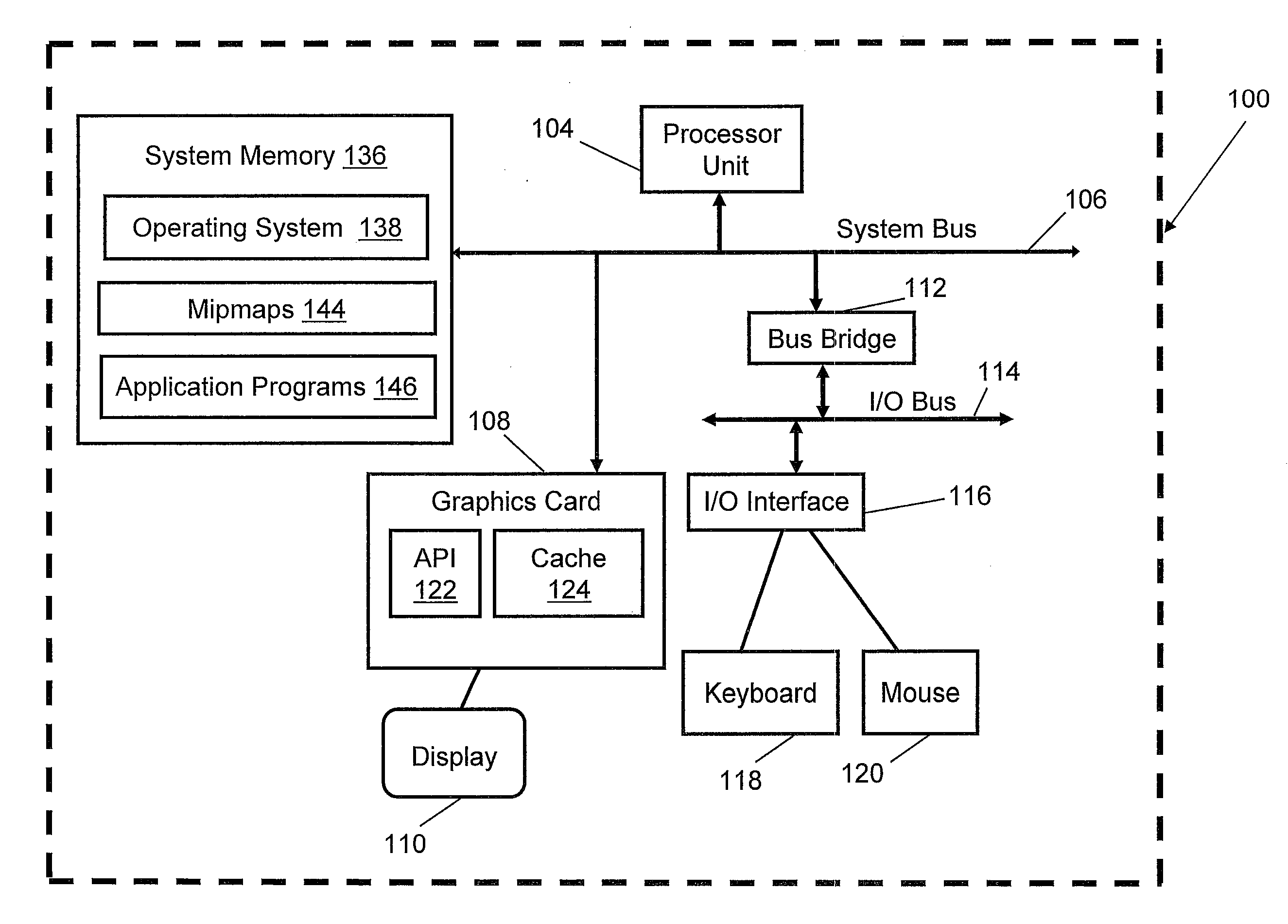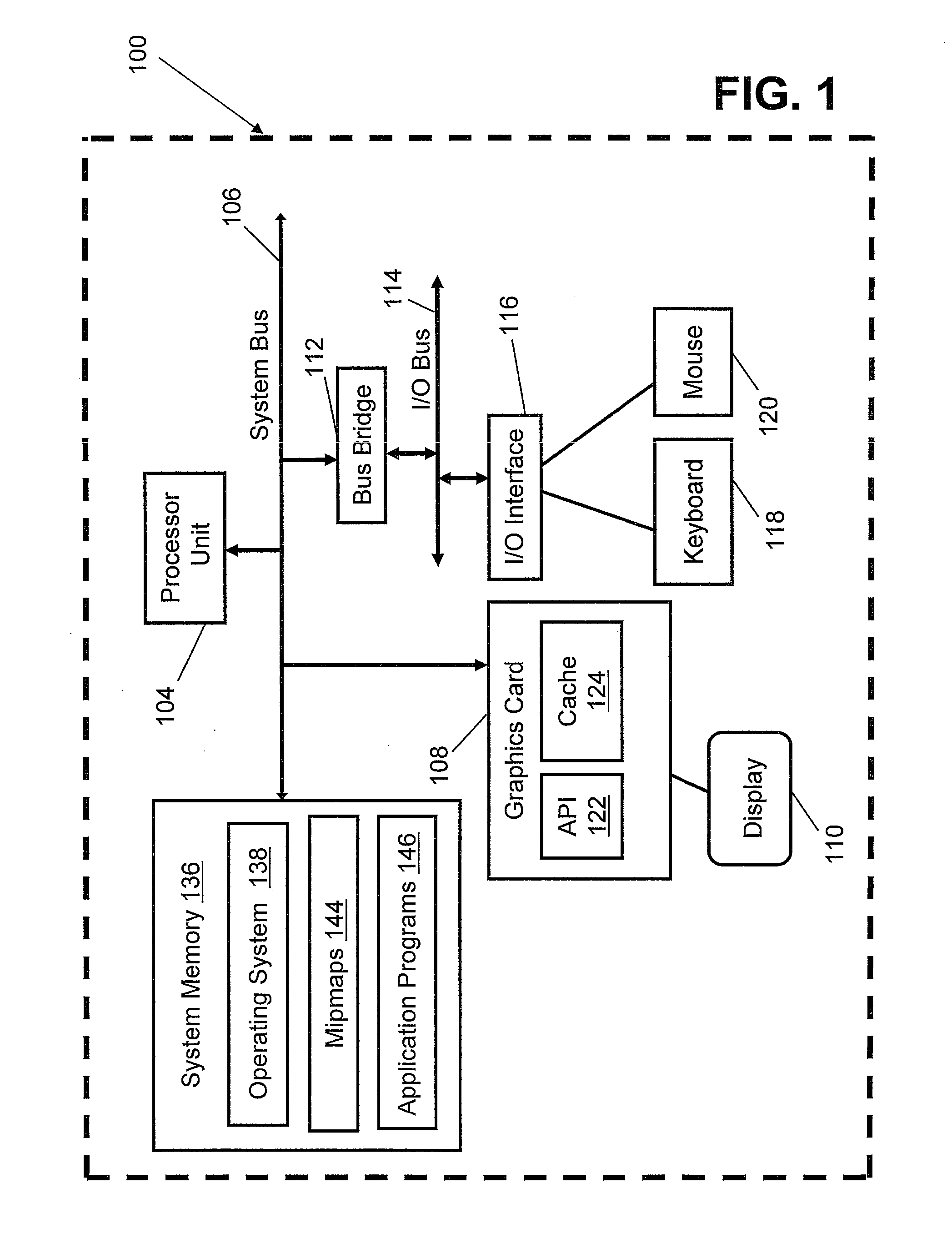Method and Apparatus for Improving Hit Rates of a Cache Memory for Storing Texture Data During Graphics Rendering
a cache memory and texture data technology, applied in the field of graphics rendering, can solve the problems of increasing aliasing in the cache memory of the chip, reducing coherency, and rendering images may not be acceptable texture quality
- Summary
- Abstract
- Description
- Claims
- Application Information
AI Technical Summary
Benefits of technology
Problems solved by technology
Method used
Image
Examples
Embodiment Construction
[0014]Referring now to the drawings, and specifically to FIG. 1, there is depicted a block diagram of a data processing system in which a preferred embodiment of the present invention can be incorporated. As shown, a data processing system 100 includes a processor unit 104 that is coupled to a system bus 106. System bus 106 is coupled to an input / output (I / O) bus 114 via a bus bridge 112. An I / O interface 116, which is coupled to I / O bus 114, affords communication with various I / O devices, including a keyboard 118, and a mouse 120.
[0015]A system memory 136 is also coupled to system bus 106. Code that populates system memory 136 includes an operating system (OS) 138, multiple mipmaps 144, and one or more application programs 146. Mipmaps are collections of optimized but less detailed and smaller size images that accompany a texture. Mipmaps can increase the speed of graphics rendering by reducing the amount of texture pixels (also known as textels) that must be processed. In addition...
PUM
 Login to View More
Login to View More Abstract
Description
Claims
Application Information
 Login to View More
Login to View More - R&D
- Intellectual Property
- Life Sciences
- Materials
- Tech Scout
- Unparalleled Data Quality
- Higher Quality Content
- 60% Fewer Hallucinations
Browse by: Latest US Patents, China's latest patents, Technical Efficacy Thesaurus, Application Domain, Technology Topic, Popular Technical Reports.
© 2025 PatSnap. All rights reserved.Legal|Privacy policy|Modern Slavery Act Transparency Statement|Sitemap|About US| Contact US: help@patsnap.com



